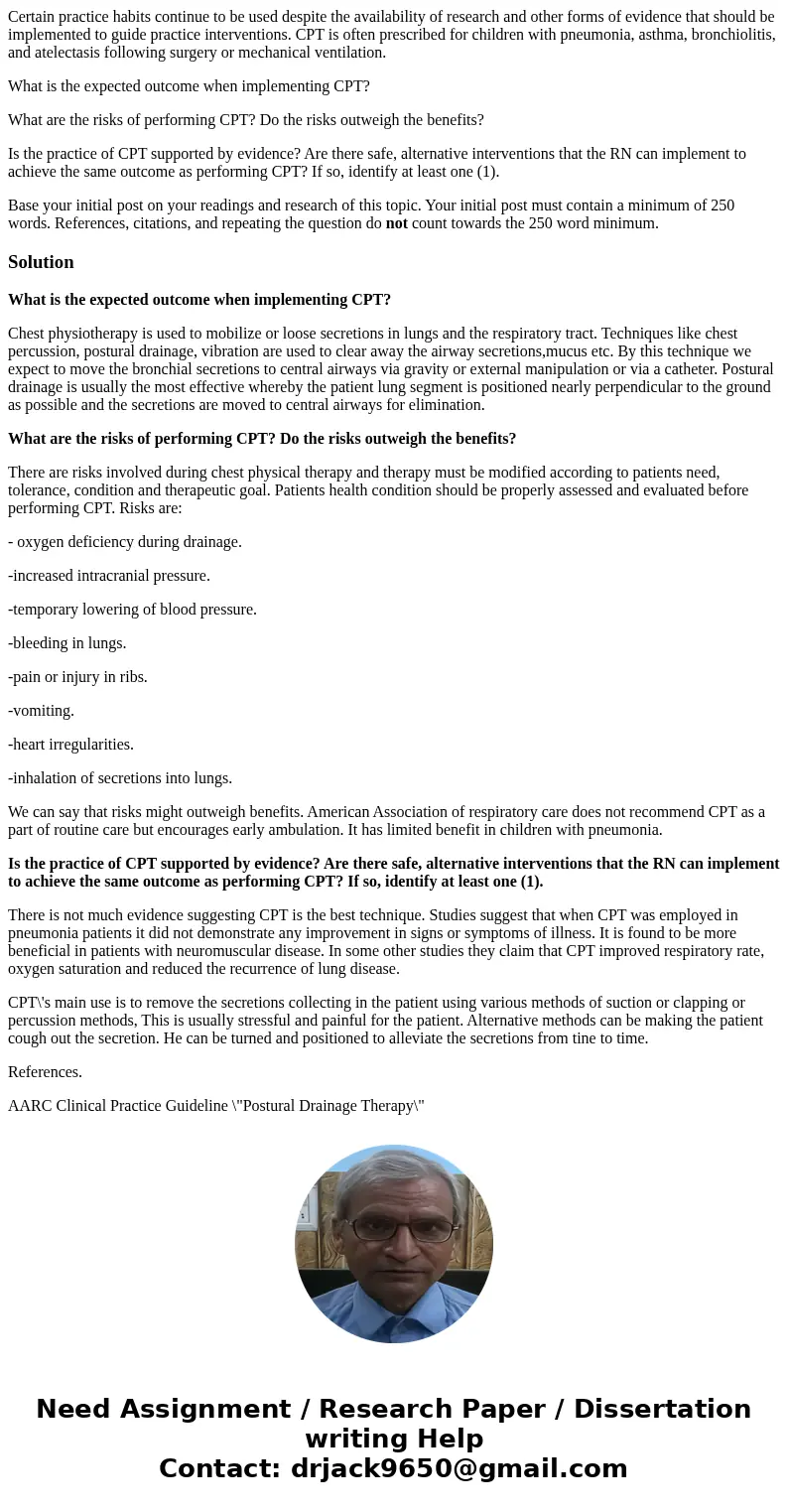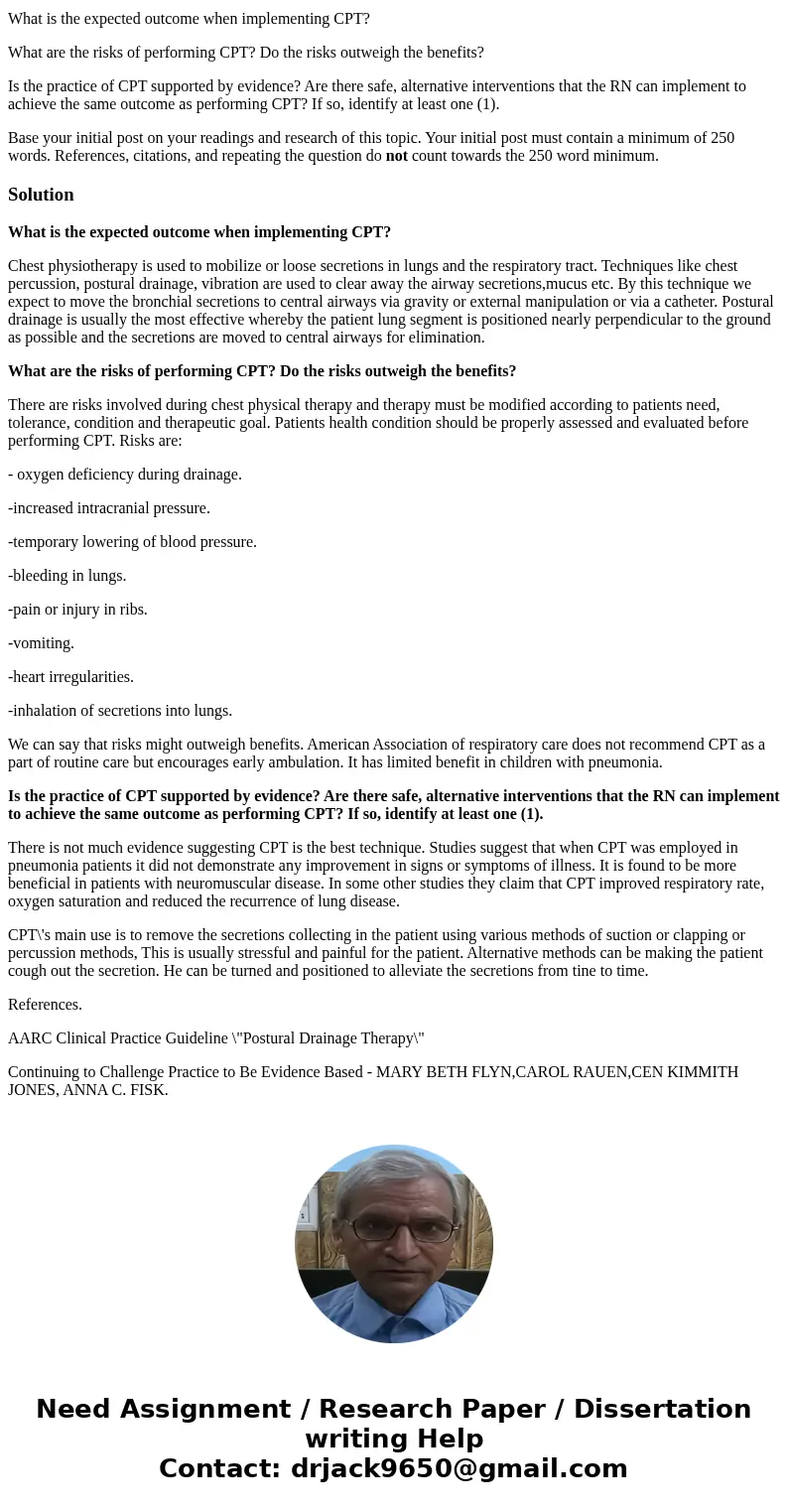Certain practice habits continue to be used despite the avai
Certain practice habits continue to be used despite the availability of research and other forms of evidence that should be implemented to guide practice interventions. CPT is often prescribed for children with pneumonia, asthma, bronchiolitis, and atelectasis following surgery or mechanical ventilation.
What is the expected outcome when implementing CPT?
What are the risks of performing CPT? Do the risks outweigh the benefits?
Is the practice of CPT supported by evidence? Are there safe, alternative interventions that the RN can implement to achieve the same outcome as performing CPT? If so, identify at least one (1).
Base your initial post on your readings and research of this topic. Your initial post must contain a minimum of 250 words. References, citations, and repeating the question do not count towards the 250 word minimum.
Solution
What is the expected outcome when implementing CPT?
Chest physiotherapy is used to mobilize or loose secretions in lungs and the respiratory tract. Techniques like chest percussion, postural drainage, vibration are used to clear away the airway secretions,mucus etc. By this technique we expect to move the bronchial secretions to central airways via gravity or external manipulation or via a catheter. Postural drainage is usually the most effective whereby the patient lung segment is positioned nearly perpendicular to the ground as possible and the secretions are moved to central airways for elimination.
What are the risks of performing CPT? Do the risks outweigh the benefits?
There are risks involved during chest physical therapy and therapy must be modified according to patients need, tolerance, condition and therapeutic goal. Patients health condition should be properly assessed and evaluated before performing CPT. Risks are:
- oxygen deficiency during drainage.
-increased intracranial pressure.
-temporary lowering of blood pressure.
-bleeding in lungs.
-pain or injury in ribs.
-vomiting.
-heart irregularities.
-inhalation of secretions into lungs.
We can say that risks might outweigh benefits. American Association of respiratory care does not recommend CPT as a part of routine care but encourages early ambulation. It has limited benefit in children with pneumonia.
Is the practice of CPT supported by evidence? Are there safe, alternative interventions that the RN can implement to achieve the same outcome as performing CPT? If so, identify at least one (1).
There is not much evidence suggesting CPT is the best technique. Studies suggest that when CPT was employed in pneumonia patients it did not demonstrate any improvement in signs or symptoms of illness. It is found to be more beneficial in patients with neuromuscular disease. In some other studies they claim that CPT improved respiratory rate, oxygen saturation and reduced the recurrence of lung disease.
CPT\'s main use is to remove the secretions collecting in the patient using various methods of suction or clapping or percussion methods, This is usually stressful and painful for the patient. Alternative methods can be making the patient cough out the secretion. He can be turned and positioned to alleviate the secretions from tine to time.
References.
AARC Clinical Practice Guideline \"Postural Drainage Therapy\"
Continuing to Challenge Practice to Be Evidence Based - MARY BETH FLYN,CAROL RAUEN,CEN KIMMITH JONES, ANNA C. FISK.


 Homework Sourse
Homework Sourse